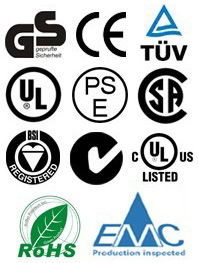One of the Led industry's research institutions, LEDinside, has opened the LEDforum China 2010 which invites analysis of the latest trends and forecasting, with over 1000 participants from the industry, government and academia showing their faces.
A major talking point, introduced by Roger Chu, research director at LEDinside, is that for Led lighting to be adopted as general Lighting, government subsidies will be required. Chu also said that within the special application market, demand for lighting can be developed through enhancing LED characteristics - so that's building on vertical integration all across the board.
Bigwigs in lighting manufacturers such as Philips and Panasonic have realised that for LED to do well it needs total vertical integration all the way from chips to light source systems.
Everlight's Bernd Kammerer, who has an excellent name, said that led lighting is the way forward: they're more energy efficient and the amount of LED streetlight installation is set to grow from 610,000 lamps globally from 2009 up 42 percent in 2010, with an expected total of 870,000 units. The market will continue to develop and become even more environmentally friendly in the future, while prices will drop as adoption increases in an effort to replace traditional lighting. Justin K. Yang of Veeco Instruments agrees, saying that the next generation of MOCVD will ramp up mass production of LED lights, improving yield rate and lowering cost. Thanks to the increased popularity of MOCVD, LED TV market penetration can be expected to reach a huge 85 percent by 2012, he reckons.
As far as energy spending goes, it's thought by Taiwan's Industrial Technology Research Institute that if every fixture in Taiwan was replaced by LED lights, it could save on NTD 30 billion - $923 million USD. Carbon dioxide emissions would be reduced by three million tons.
For led chips, the target efficiency for 2010 is >80 lm/W. Epistar's vice president of research showed off the new high voltage LED, or HVLED, which promises to narrow the gap between cold white-light and warm white-light tech. Target luminous efficacy is 130lm/W for 2010 and a bump up to 150lm/W by 2015.
According to the Vice Secretary-General of the China Solid State Lightning Alliance, China's semiconductor industry is lacking in core LED technologies and needs further cooperation between central and local governments. Comparitively, Mark McClear of Cree LED Components, said that the US has "highly favourable" policies for LED development, and that the next step in the States is lower costs, better LED luminous efficacy and the standardisation of products.


